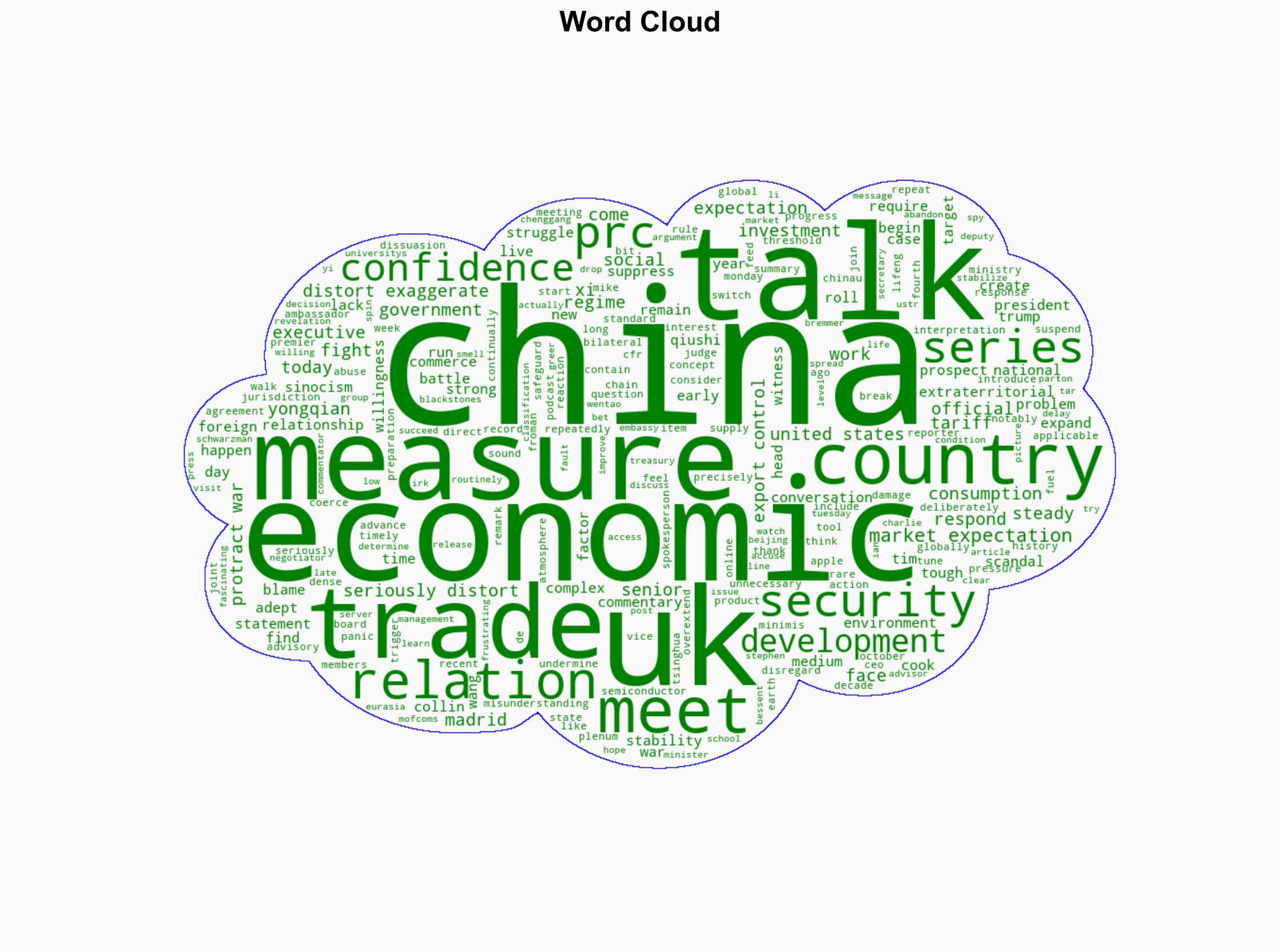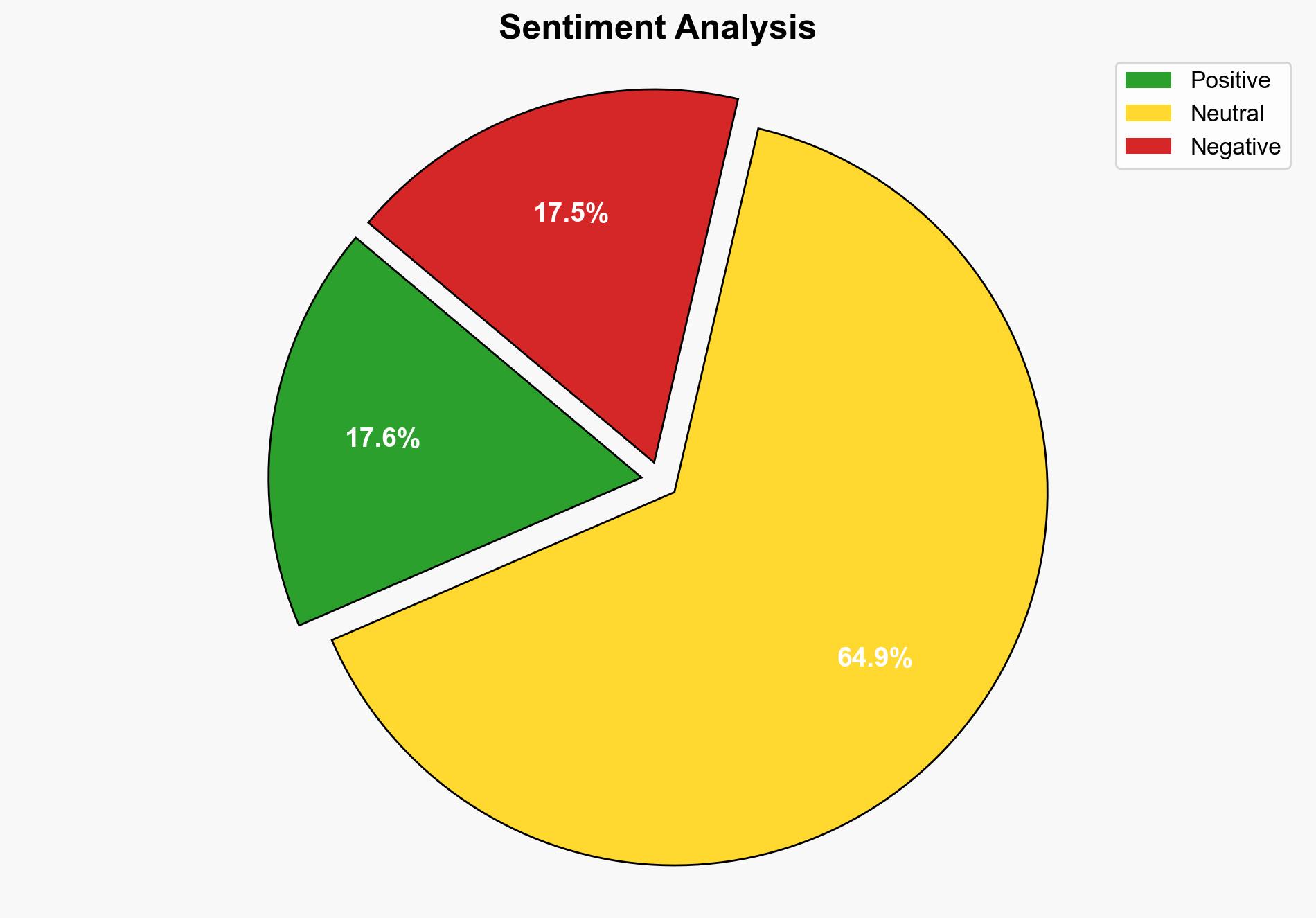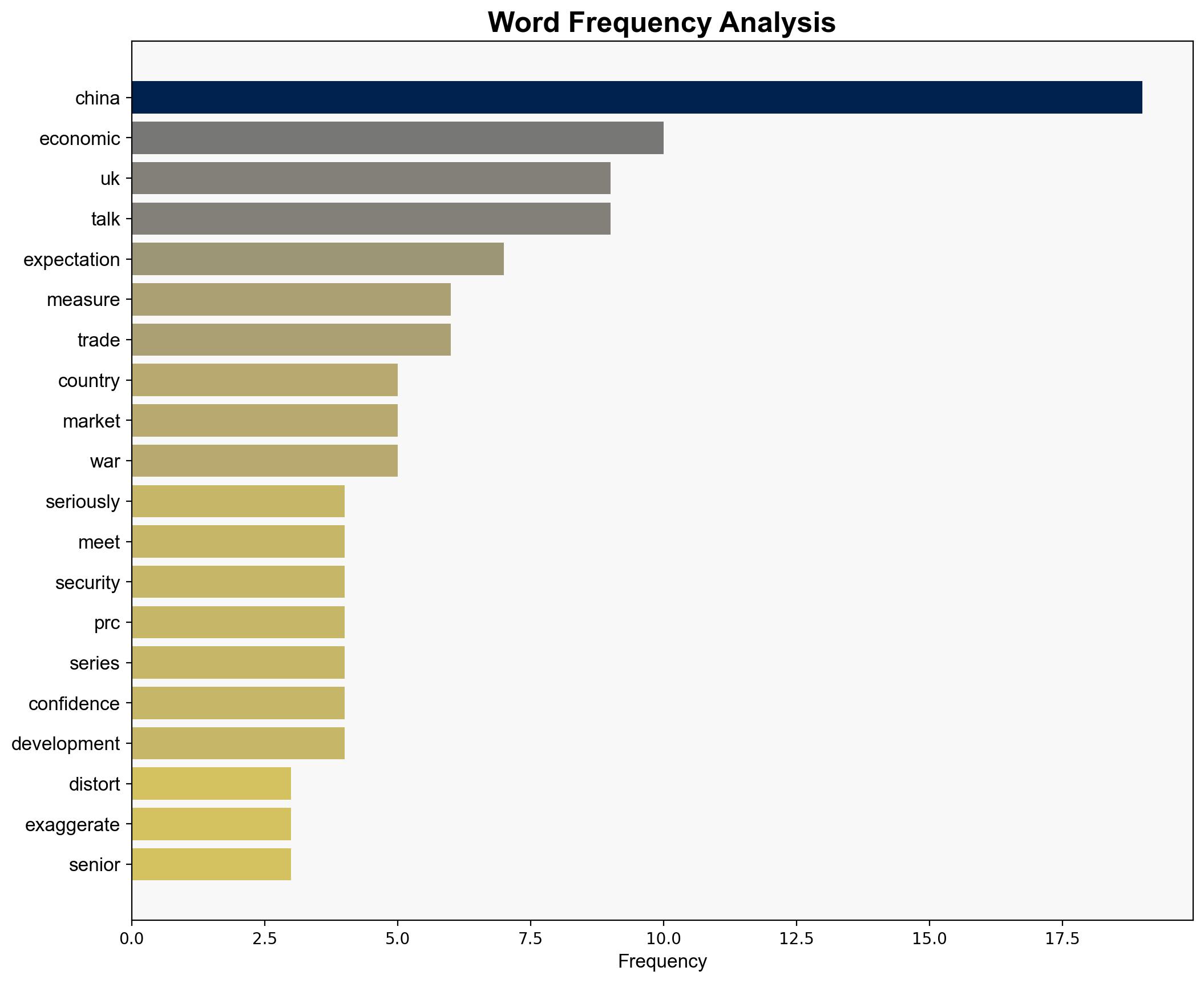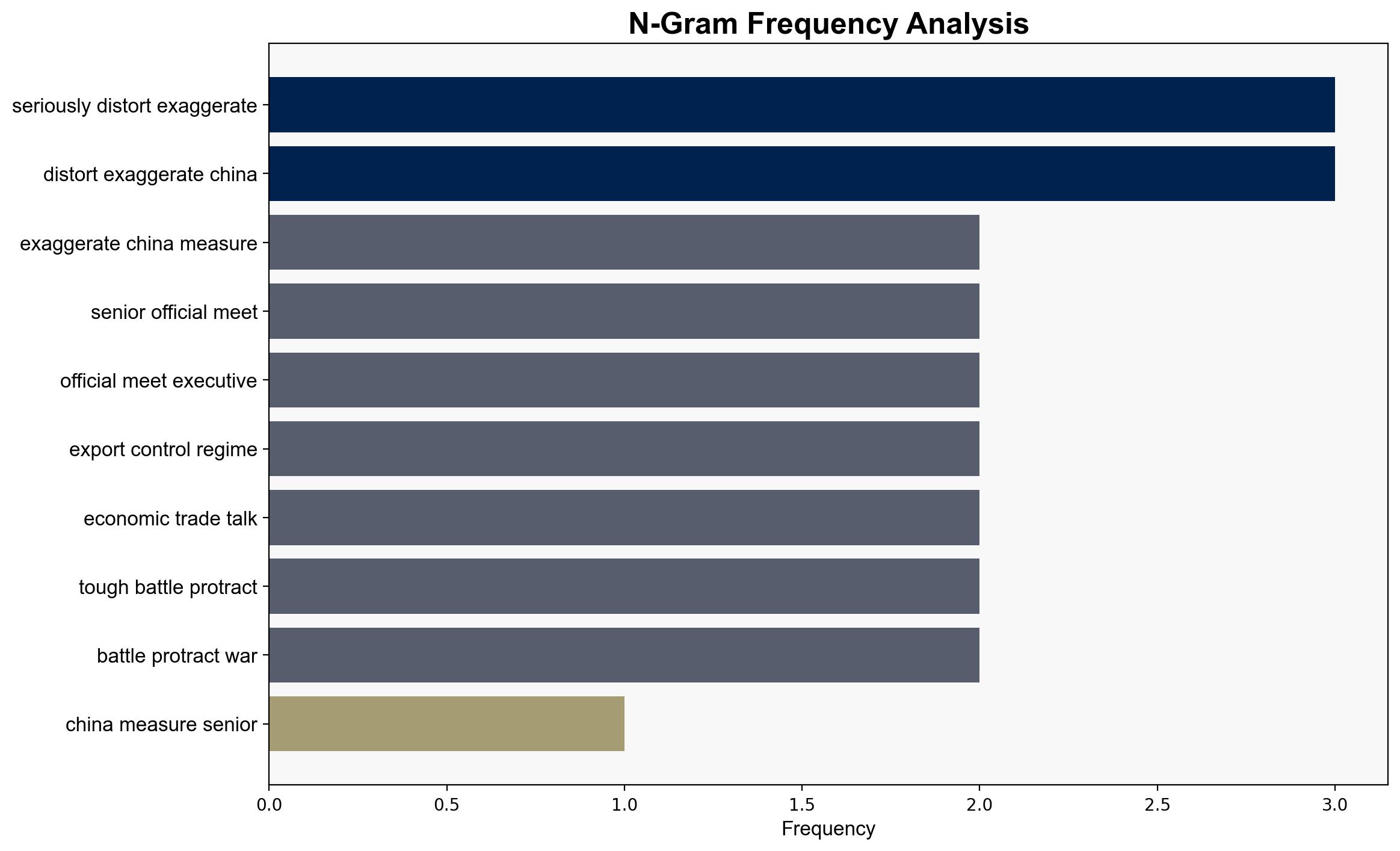US seriously distorts and exaggerates Chinas measures Senior officials meet US executives UK-China relations – Sinocism.com
Published on: 2025-10-17
Intelligence Report: US seriously distorts and exaggerates China’s measures – Sinocism.com
1. BLUF (Bottom Line Up Front)
The most supported hypothesis is that the US is strategically exaggerating China’s measures to justify its own export control policies and influence global perception. Confidence level: Moderate. Recommended action: Enhance diplomatic engagement to clarify intentions and reduce tensions, while monitoring potential economic impacts.
2. Competing Hypotheses
Hypothesis 1: The US is deliberately exaggerating China’s measures to justify its own export controls and rally international support against China. This aligns with historical patterns of US policy and rhetoric aimed at containing China’s technological and economic rise.
Hypothesis 2: China’s claims of US exaggeration are a strategic deflection to downplay its own aggressive trade practices and maintain a favorable international image. This could be an attempt to mitigate backlash from international partners and domestic audiences.
Using ACH 2.0, Hypothesis 1 is better supported by the pattern of US policy and the strategic context of US-China relations, where the US has consistently sought to counter China’s influence.
3. Key Assumptions and Red Flags
– Assumption: The US has a strategic interest in containing China’s technological advancements.
– Assumption: China seeks to maintain a positive international image while pursuing aggressive trade policies.
– Red Flag: Lack of detailed evidence supporting China’s claims of US exaggeration.
– Potential Bias: Confirmation bias in interpreting US actions as inherently aggressive.
– Inconsistent Data: Discrepancies in the portrayal of trade talks and their outcomes.
4. Implications and Strategic Risks
– Economic: Prolonged tensions could disrupt global supply chains, particularly in technology sectors.
– Geopolitical: Escalation could lead to increased alignment of countries with either the US or China, impacting global alliances.
– Cyber: Potential for increased cyber espionage as both nations seek to gain technological advantages.
– Psychological: Heightened tensions may lead to increased nationalism and public support for aggressive policies in both countries.
5. Recommendations and Outlook
- Engage in diplomatic dialogue to clarify intentions and reduce misunderstandings.
- Monitor economic indicators for signs of supply chain disruptions.
- Scenario Projections:
- Best Case: Successful diplomatic engagement leads to reduced tensions and stabilization of trade relations.
- Worst Case: Escalation leads to a full-fledged trade war, severely impacting global markets.
- Most Likely: Continued tensions with intermittent diplomatic engagements, resulting in a prolonged state of uncertainty.
6. Key Individuals and Entities
– Yongqian (Ministry of Commerce spokesperson)
– Tim Cook (Apple CEO)
– Stephen Schwarzman (Blackstone)
– Ian Bremmer (Eurasia Group)
– Li Chenggang (MOFCOM’s trade negotiator)
7. Thematic Tags
national security threats, cybersecurity, economic policy, US-China relations





